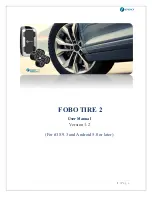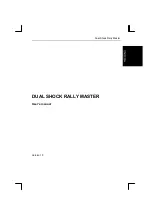
10 |
P a g e
pressure against a built-in vacuum, resulting in an
Absolute Pressure reading. The internal firmware
will then subtract the sea-level pressure of 101.3
Kpa (14.7 psi) from this reading. This final reading
which will be shown in the app can be termed as i)
Tire
Absolute Pressure minus sea level pressure
,
or ii) Gage Pressure reference to sea-level altitude.
With this formulation, Fobo TIRE 2 sensor will read
the same pressure value for any given tire,
irrespective of altitude (assuming a constant
temperature). This will ensure the correct tire
footprint per vehicle manufacturer’s pressure
recommendation, for all altitude above sea-level,
given a constant temperature.
As a corollary, a tire with a Fobo reading of, say 40
psi at an altitude of 5000ft, will read the same 40 psi
when driven to sea-level, given a constant
temperature. In reality, it will read higher due to the
warmer temperature at sea-level, and may need some
air release if the temperature difference is great. Tire
pressure generally will increase 1 psi (~7kPa) for
every 10 deg F (5.6 deg C) rise in temperature.
Fobo wishes to highlight the above formulation is for
usage at sea-level and above, and will not be accurate
for use otherwise. In practice, this should not be an
issue as the lowest area on earth will result in an
insignificant error of 0.3 psi (~2 Kpa).
For users who wish to retain ‘Gauge Pressure
Reading’, the Fobo Tire 2 App has a Gauge Pressure,
adjusted to local altitude using cell towers or
individual phone barometer if available. This Gauge
Pressure button can be accessed from the App
(Kindly refers to Section 5.9 of this user manual).
Battery tab prior to installing a sensor, user need to remove the
battery tab from a sensor. Sensor is pre-installed with
in-car unit from the factory. Tire position is indicated
on the battery tab.
FOBO TIRE 2 sensor units are designed to be robust and operate reliably 24x7
to provide tire information around the clock. It is designed to be water proof
(IP57) and by our special use of custom engineering plastics, it will be able to
withstand road salts or other common automotive chemicals (petrol, engine oil,
car wash shampoo, etc.).











































